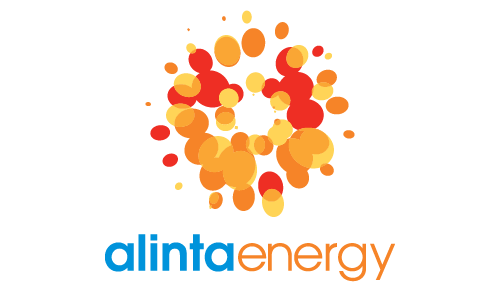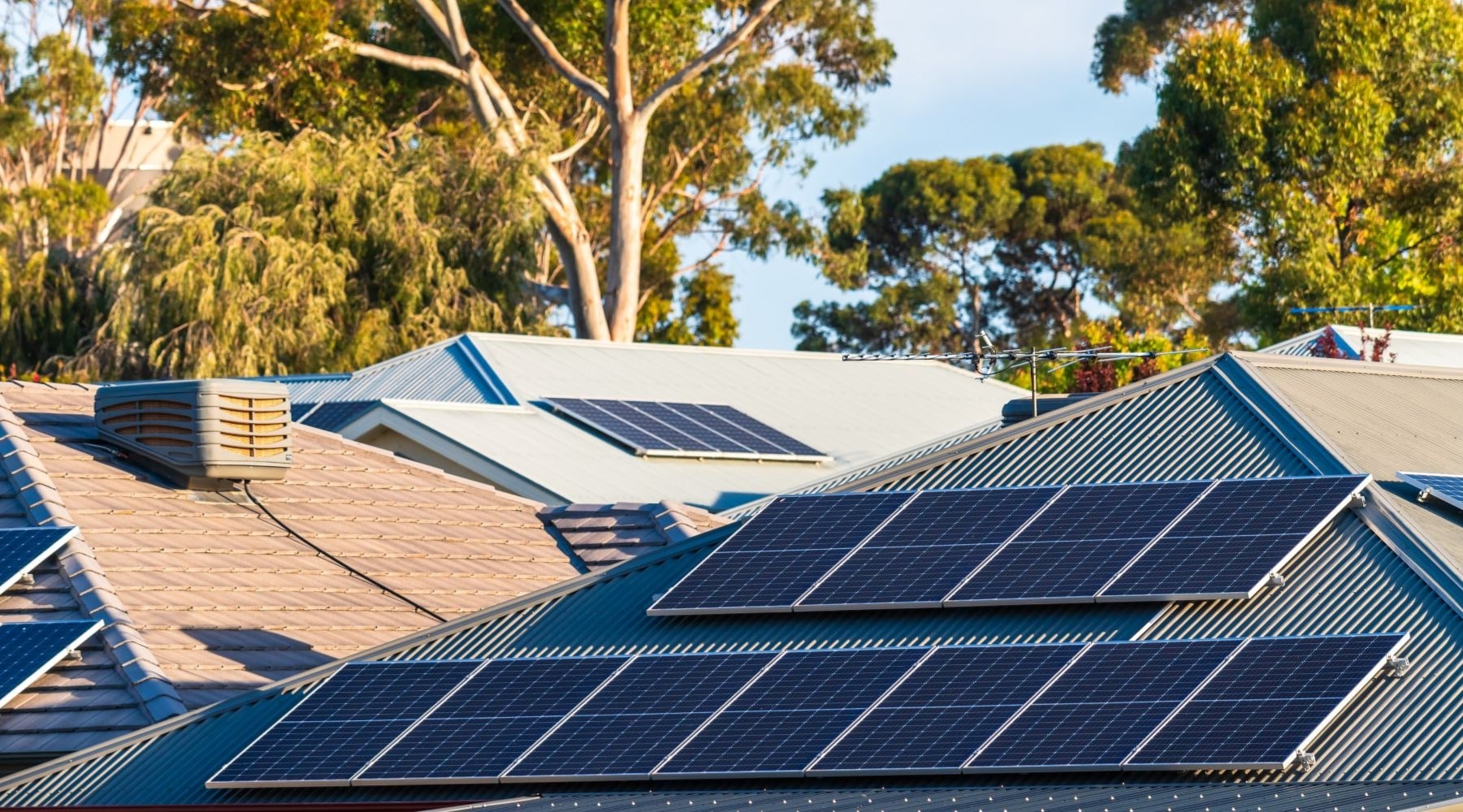













We’ve partnered with Econnex to bring you a range of energy plans to help you compare them.
Electricity plans can at first seem rather complex, and finding the right one for your energy needs can sometimes feel overwhelming. This is where Savvy can help you! Our 100% free comparison service can help you find a better deal and potentially save you money by helping you switch providers online almost instantly.
By comparing a range of electricity plans online through Savvy, we make finding the best electricity plan for your needs an easy process. With our simple online comparison service, you can quickly compare deals from some of Australia’s leading providers side-by-side and secure the best plan for your energy needs. Don't pay more than you need to for your electricity; start comparing your options with Savvy today.
Why compare energy plans through Savvy?
You won't need to pay a cent to compare a variety of energy plans online through Savvy, as it's 100% free.
By filling out your form and providing a recent energy bill, you can have all the facts and figures worked out for you.
When you fill out your quote, you'll be able to consider offers from some of the leading energy providers in Australia.
How do electricity plans work in Australia?
An electricity plan is a contractual arrangement between an energy retailer and a customer. They vary greatly depending on the state or territory in which you live in Australia. In some states, the government regulates the electricity market, while in others, it is deregulated. As a result, the types of plans and pricing structures available can also vary significantly.
For example:
- New South Wales, south-east Queensland, South Australia and Victoria have completely deregulated electricity markets, allowing electricity providers more freedom to compete against each other and provide customer with the cheapest electricity plans
- Tasmania, the Northern Territory, regional and far north Queensland and the Australian Capital Territory are still regulated for price, but have deregulated competition rules, so there is still some competition between providers
- Western Australia is the only state which regulates both competition between providers, and the price of electricity, leaving consumers with less choice about who they buy their electricity from, and the price they pay
How do I compare electricity plans to find the best one?
There are quite a few things to consider when looking at energy plans to decide which one may be the best plan for your needs. Here’s what to look out for and compare:
Standard retail contract vs. market retail contract
There are two main types of electricity plans to choose from:
- A standard contract provides you with the appropriate electricity price that is set by law in your state. This plan does not typically come with any special conditions, but it does provide the flexibility to change providers at any time without paying exit fees.
- A market contract often comes with special conditions, such as price discounts, which are only valid for the term of the contract. However, these plans may include exit fees if you wish to switch providers before the contract ends.
Variable vs. fixed rates
You may have the option to choose between variable or fixed rate plans for your electricity when signing up for a market electricity contract.
- Variable rates are similar to variable interest rates: they’re subject to change over time, which may result in sudden increases or drops in price depending on the wholesale national market rate.
- Fixed rates remain the same for a set period, providing greater predictability and stability on your electricity bills.
Overall cost of the plan
Electricity providers offer quotes based on the electricity reference price and average usage in your area. They also quote a percentage difference between their own price and the national reference price, so you can more easily compare electricity costs. This helps you know you're comparing apples with apples and is a good starting point for comparing costs.
Discount offers
Electricity providers may offer various discounts to help you save on your energy bills. These discounts can come in different forms, such as a percentage off your bill, a set dollar amount off your bill, or a combination of both.
Electricity discount offers can be a great way to save money on your bills. However, it's important to carefully read the terms and conditions of the discount offer, as:
- Some discounts may only be available for a limited time or may have certain eligibility criteria
- The discount may only apply to a portion of your bill, while other charges remain unchanged
When considering discount offers, look at the length of time for which the discount applies and if there are any penalties if you decide to switch providers during this benefit period, or when it runs out. This will help you determine whether it’s suitable for you not only in the short-term, but the long-term also.
Tariffs
Different tariffs are charged for electricity use, and deciding which type of tariff would most suit your household use is important. The various tariffs which are available include:
- Single rate tariff: the cost per kilowatt-hour (kWh) is the same regardless of when you're using the electricity
- Time of use tariff: you’ll be charged different rates for different times of the day (peak, off-peak and shoulder periods), with off-peak being the cheapest rate and peak time being the most expensive
- Controlled load tariff: this type of tariff is designed for high-demand appliances, which are billed at a separate rate from standard electricity usage
- Demand tariff: based on the highest amount of electricity used during a specific period, regardless of the time of day that it’s used
Choosing the right tariff for your usage pattern can potentially save you money on your electricity bill. Understanding your usage habits and reviewing your recent bills can help you determine the most suitable tariff for your household.
Fees
When choosing an electricity plan, it's important to consider the fees which are charged by the provider, including:
- Connection and disconnection fees
- Credit card and direct debit fees
- Late payment fees
- Early exit fees
- Paper bill fees (if you choose to receive your bills by mail instead of online)
By comparing fees, you’ll be able to see which provider is offering the best deal in this area as part of their overall billing package.
What should I look at and compare if I have solar panels on my roof?
If you have solar panels on your roof, the feed-in tariff you receive will be a major consideration. A feed-in tariff is a program that allows homeowners with solar panels to sell excess electricity generated by their solar system back into the power grid. This tariff is also known as a ‘solar tariff' or ‘buy back rate,' and is measured in cents per kWh.
The rate you may be able to receive for your excess electricity varies and depends on various factors such as:
- the type of solar system you have
- whether you’re eligible for government solar rebates
- the feed-in rate set by your state government
- whether your provider offers any additional feed-in rate on top of the state government's set rate
types of energy plans
What factors impact the cost of my electricity plan?
Usage
Your energy usage is a major factor that determines the cost of your energy bill. The more electricity you use, the higher your bill will be. It's important to be mindful of your usage and try to conserve energy where possible. This can include turning off lights and electronics when not in use and using energy-efficient appliances.
Usage rates: cost per kWh
The amount you pay per kWh is an important factor in determining the overall cost of your energy plan. This rate varies considerably between providers, which is why it's important to compare plans through Savvy to help you find the best rate for your needs among a range of offers.
Tariff types
Energy providers offer different tariff types, which can come with different costs based on your usage. It's important to consider these different tariff types when choosing an energy plan to ensure you are getting the best deal for your individual usage habits.
Discounts
Many energy providers offer discounts to customers on their energy plans. These discounts can be based on factors like payment method, contract length or usage. It's important to compare the discount rates and the period over which they apply to ensure you are getting the best deal.
Electricity supply charge
In addition to usage rates, there is also an electricity supply charge to consider. This is the cost of staying connected to the power network and is a set charge which applies to each electricity bill you receive. It varies between retailers, so it’s important to compare these charges when choosing your electricity plan.
Geographic location
Electricity rates differ between states and territories. Some areas may have higher rates due to factors like the distance from power generation sources. This is particularly relevant for electricity plans in the Northern Territory and Tasmania, for example.
How to switch energy providers through Savvy
First and foremost, you can start by filling out a quote with information about you and your energy profile, such as where you live, your overall usage and more.
With the information in your form and a recent energy bill, you’ll be able to compare deals from a panel of leading energy providers based on a variety of important factors.
If you find an energy deal you’re happy with, you can go ahead and make the switch to a new plan or provider. This will be prepared and handled for you and can be completed in 24 to 48 hours.
More of your questions about electricity plans
When you move house in Australia, you can choose to transfer your current electricity plan to your new address, or switch to a new plan altogether. If you want to keep your existing plan, you will need to contact your energy provider and provide them with your new address and the date that you will be moving.
Alternatively, you can choose to switch to a new plan, which may be necessary if your current provider does not operate in the area of your new home, or if you want to take advantage of better deals or renewable energy options. In this case, you will need to research and compare different energy plans to find the best option for your needs and sign up for the new plan with your chosen provider.
If you can't pay your energy bill, contact your provider as soon as possible to discuss payment options. You may be able to set up a payment plan or apply for financial assistance programs. Ignoring your bill can potentially lead to the disconnection of your energy supply and can also adversely affect your credit rating.
A renewable energy plan uses energy generated from renewable sources such as wind or solar power. These electricity and gas plans often have a slightly higher cost but are better for the environment. They are also known as carbon neutral plans.
Yes – many energy providers offer dual energy plans where you can purchase both electricity and gas from the same provider. This can often simplify the billing process, and may also result in discounts or special offers for bundling services.
It's also possible to link your solar electricity plan and your gas service, so the feed-in tariff you receive for your solar generation offsets the cost of your gas usage. It is important to compare the costs and benefits of dual energy plans from various providers to ensure you are getting the best gas plan and electricity plan for your energy needs.
A cooling-off period is a set amount of time during which you can cancel a new energy plan without incurring an exit fee when you switch electricity providers. The length of the cooling-off period varies between providers but is usually between 14 and 30 days.
Time-of-use billing charges different rates for electricity depending on the time of day. For example, peak hours are often more expensive, so by adjusting your usage habits, you can use the cheapest tariff rates and save money.
Helpful guides on energy plans
Compare energy plans today
Disclaimer:
Savvy is partnered with Econnex Comparison (CIMET Sales Pty Ltd, ABN 72 620 395 726) to provide readers with a variety of energy plans to compare. We do not compare all retailers in the market, or all plans offered by all retailers. Savvy earns a commission from Econnex each time a customer buys an energy plan via our website. We don’t arrange for products to be purchased directly, as all purchases are conducted via Econnex.
Any advice presented above is general in nature and doesn’t consider your personal or business objectives, needs or finances. It’s always important to consider whether advice is suitable for you before purchasing an energy plan. For further information on the variety of energy plans compared by Econnex, or how their business works, you can visit their website.













































